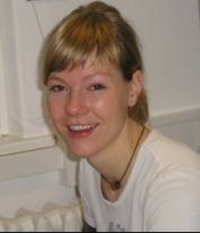← students

| First name: | Susanne |
| Last name: | Liebner |
| Country: | Germany |

Thesis Subject:Dynamic, Adaptation and Phylogenetic Characterisation of Methanotrophic Communities in Siberian Permafrost Soils
| Education: | |
| 1997
A-levels “Immanuel-Kant-Gymnasium”, Berlin, Germany |
|
| 1999/2000 Stay abroad at the University of Plymouth, Great Britain | |
| 2003
Diploma in Geoecology University of Potsdam, Germany |
|
| since 2003 Candidate of the International Max Planck Research School of Marine Microbiology (MarMic), Max Planck Institute for Marine Microbiology, Bremen, Germany | |
| since 2004 PhD candidate at the Alfred Wegener Institute for Polar and Marine Research, Research Department Potsdam, working group “Geomicrobiology and Carbon Dynamics in Periglacial Regions” | |
| 2004
MSc (Marine Microbiology) University of Bremen, Germany |
Scientific Interests and Goals:I want to understand if and how ecology and diversity of microorganisms in the extreme environments of arctic Permafrost regions determine carbon dynamics in these regions? For me, this is correlated with the question of microbial stability: How can the stability of microbial communities be determined and how is it affected by Global Change?
My scientific goal is to contribute to a combination of different scales of trace gas fluxes in climatic sensitive regions (e.g. integration of microbial 'microscale' into models of trace gas fluxes). This knowledge is a key to understand how changing environmental conditions shape the functions of different landscape structures.
My scientific goal is to contribute to a combination of different scales of trace gas fluxes in climatic sensitive regions (e.g. integration of microbial 'microscale' into models of trace gas fluxes). This knowledge is a key to understand how changing environmental conditions shape the functions of different landscape structures.
Selected Publications:Liebner and Wagner (2007) Abundance, distribution and potential activity of methane oxidizing bacteria in permafrost soils from the Lena Delta, Siberia, Environmental Microbiology, 9 (1), 107-117


